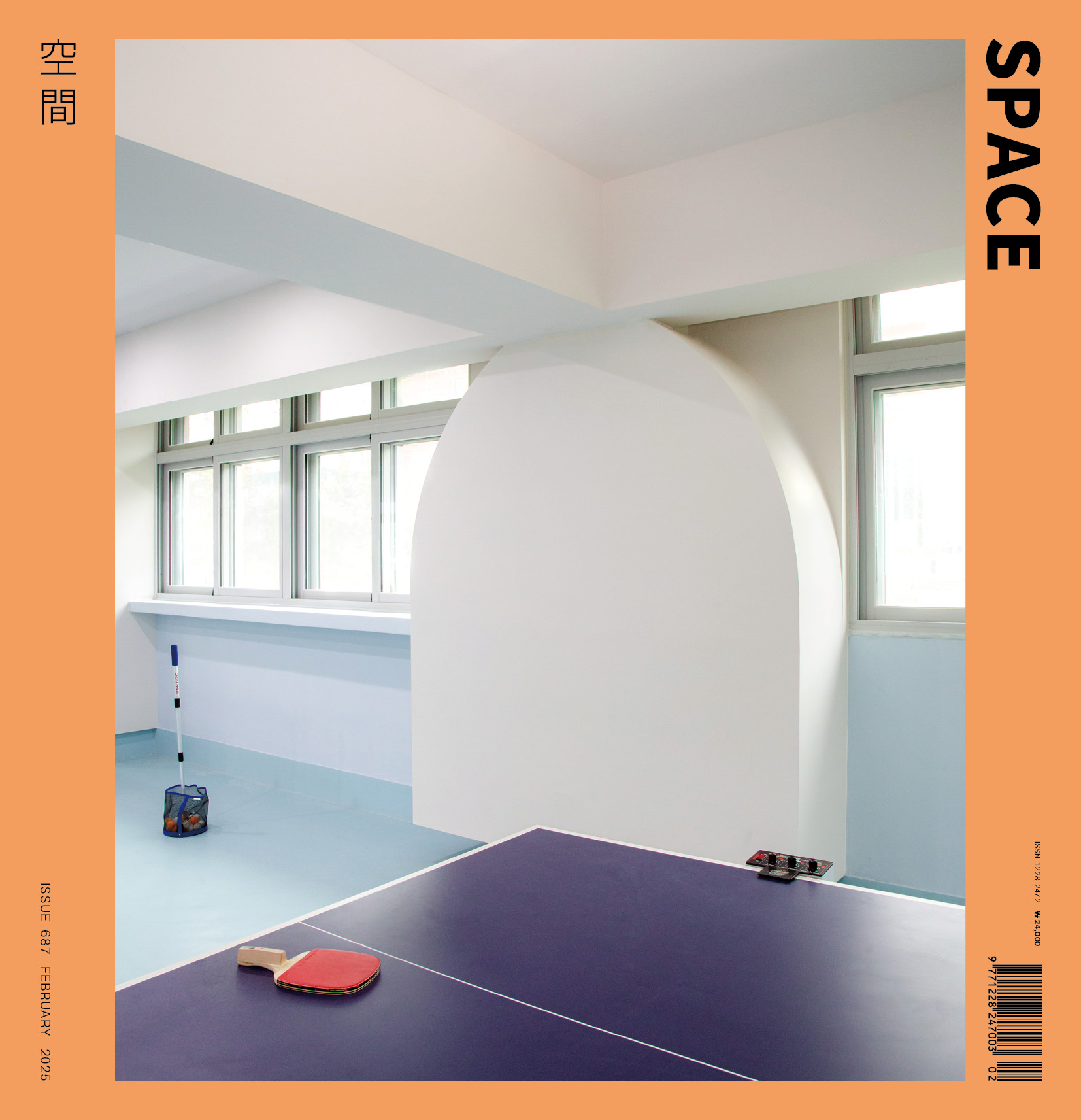SPACE February 2025 (No. 687)
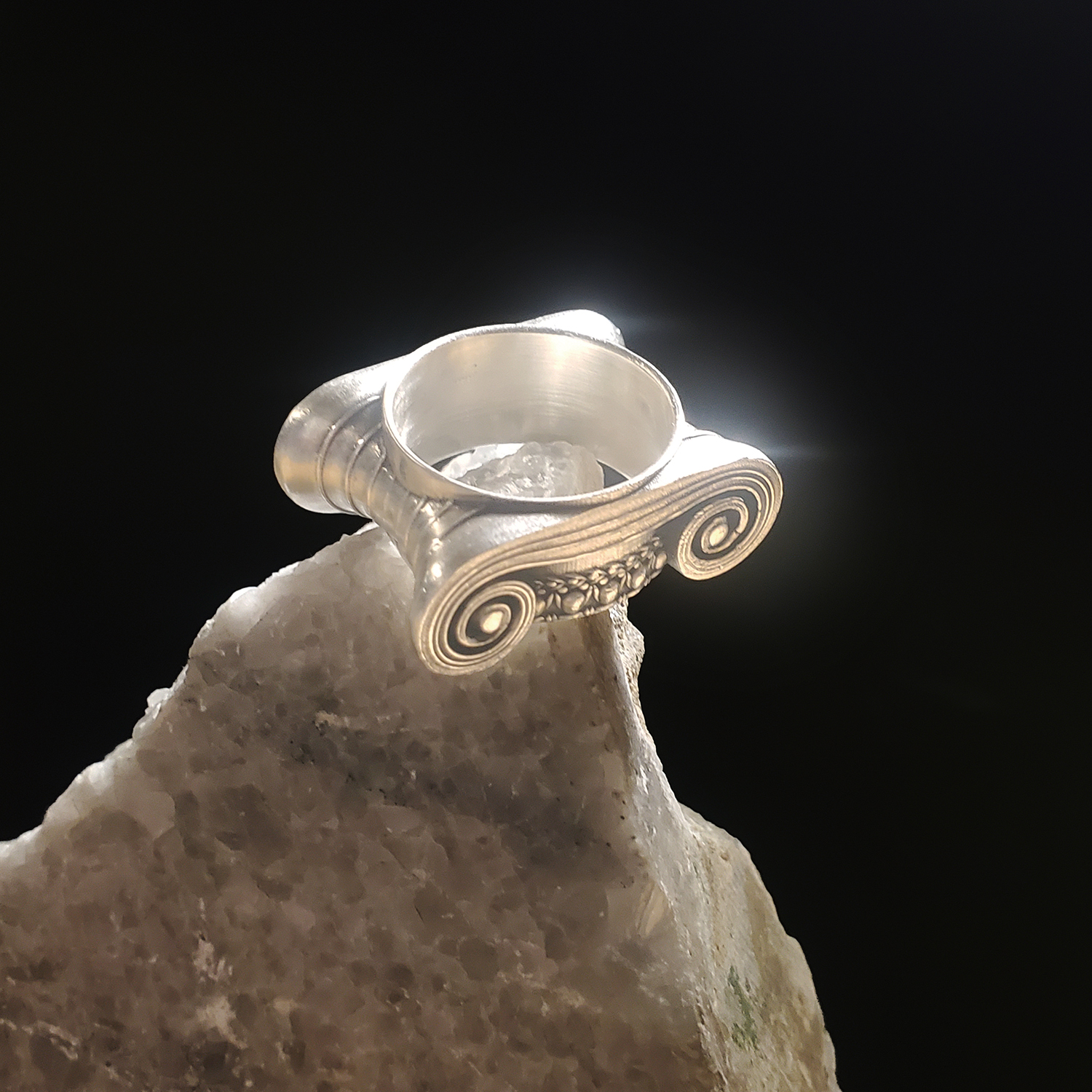
Ornament is Sublime, Ionic Ring (2023) An extension of the concept of ‘souvenirs’, this piece reinterprets architectural ornamentation as bodily adornments (accessories), miniaturising Ionic and Doric column capitals into ring forms. As both an accessory and a playful rebuttal to Adolf Loos’s manifesto ‘Ornament and Crime’, the work suggests that ornamentation, scrubbed from buildings, finds new vitality when placed on the human body as its stage. ©HYPERSPANDREL
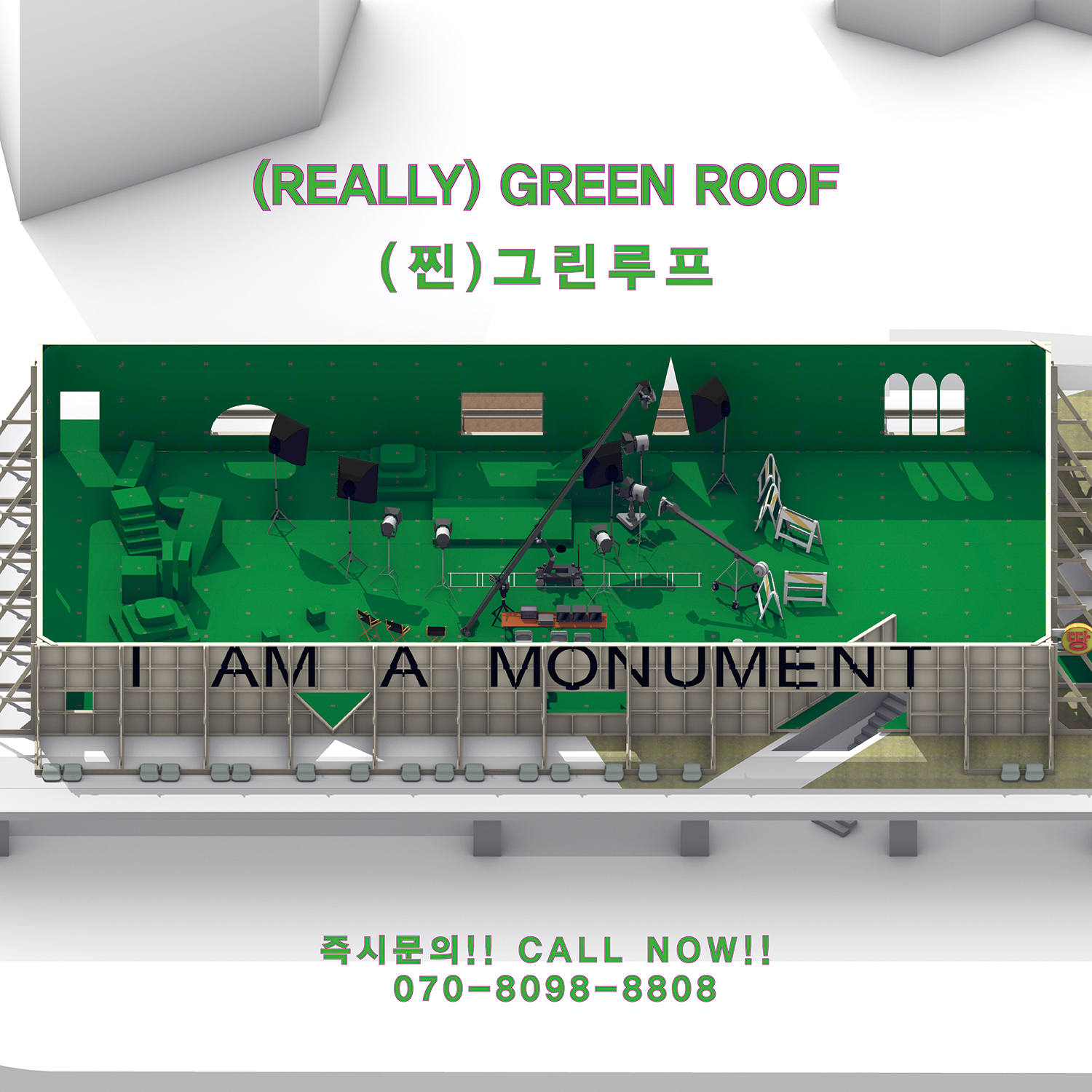
(Really) Green Roof (2023) A submission to the Seoul MARU Public Intervention competition, inspired by the materials and scenery commonly found on rooftops in Korea. Highlighting the fact that Seoul MARU is, after all, a rooftop, the project humorously explores new possibilities for public intervention by using the green urethane paint frequently seen on rooftops as a large chroma key. ©HYPERSPANDREL
Deeply Personal Yet Ultimately Impersonal
Conducting interviews with the architects of the Harbinger Project was perplexing, as they were not to be tied to a familiar nor to a a singular language. True to the titles of the discussions – ‘Their Dual Codes’, ‘Off-Centre Approaches’, and ‘In Search of Lost Languages’ – they encompass both ‘this’ and ‘that’, diverge from what is established, or collect unknown languages. Each individual’s architectural interests traverse Korea-west, context-function, reality-quality, architecture-building, completeness-incompleteness, locality-individuality, mainstream-marginal, virtuality, ornamentation, collective memory, time, femininity, and multiplicity, but in truth, they belong to none. Their work overlaps or contrasts with that of Adolf Loos, Mies van der Rohe, Aldo Rossi, Enric Miralles, Antoni Gaudí, and Lina Bo Bardi, but only in fragments. They have an abundance of narratives, from which they draw and reorganise, seeking diversity, difference, and individuality to craft stories that suit them. This is why they remain elusive, seeming somehow personal yet leaving even members of their own generation puzzled or unfamiliar. If one had to name it, this deeply personal quality is their defining trait.
Just as Lauren Berlant interpreted personal experiences and emotions as ‘impersonal’ through the lens of socio-political contexts, their personal characteristics can also be framed as impersonal through specific contexts and metaphors.
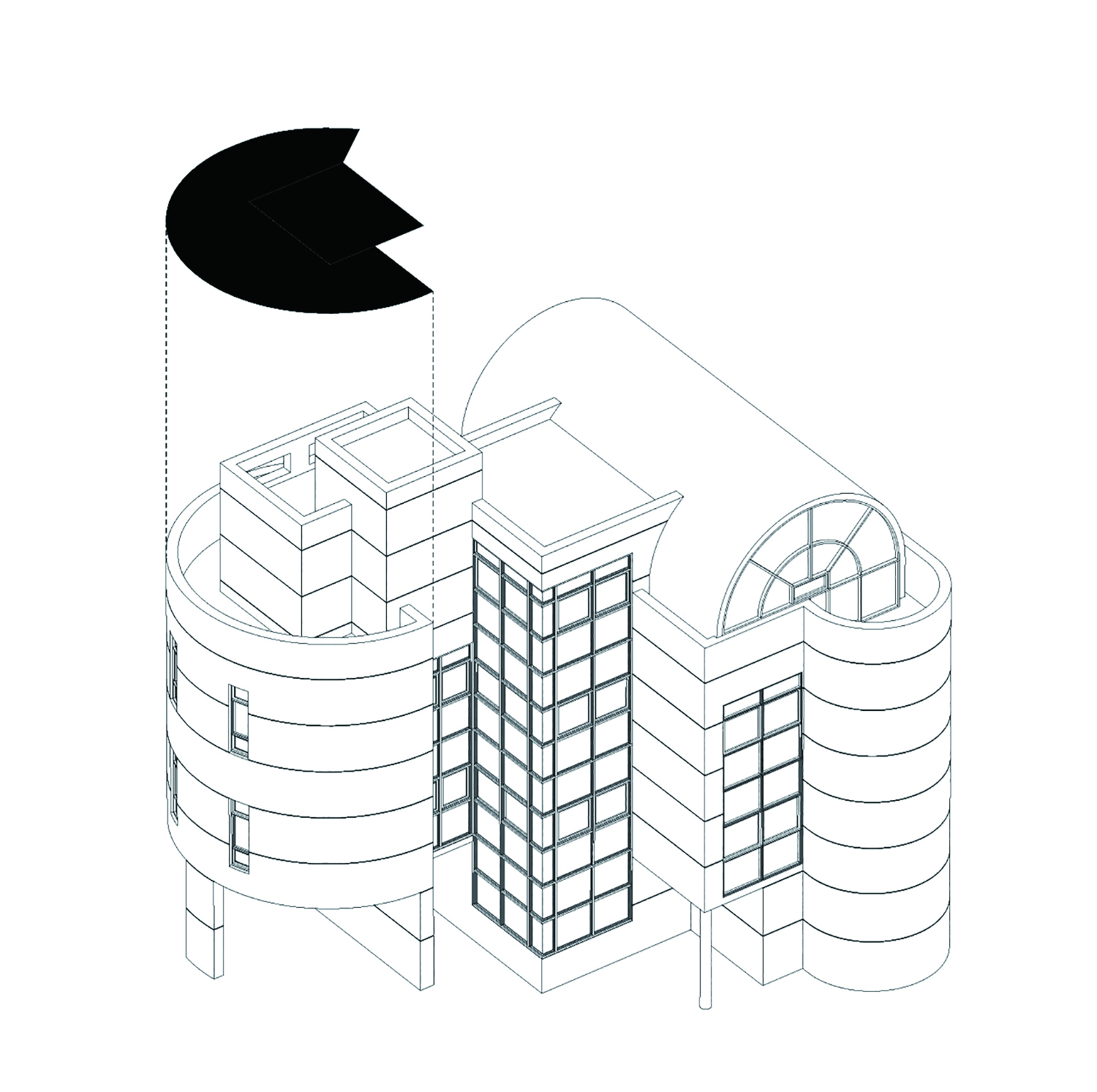
©Midday
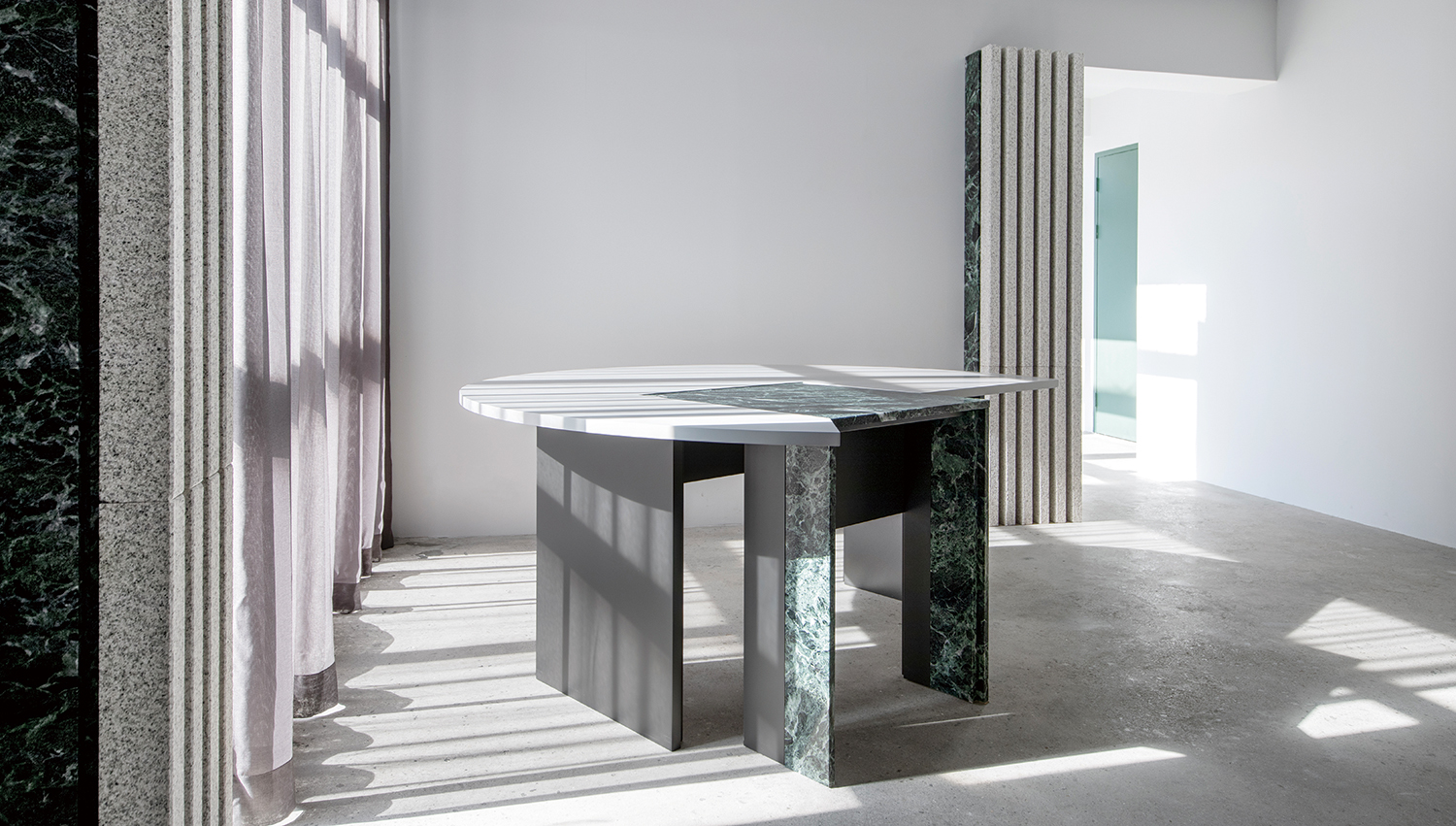
Boiling from Within
The 1990s were a time when various theories such as post-colonialism, postmodernism, feminism, neoliberalism, and post-structuralism were imported from the west. Those born around the 1990s are not a generation that necessarily had an intellectual grasp of these theories, but internalised them. In an increasingly globalised and digitised environment, they easily communicated with people of different nationalities and gender identities and directly or indirectly experienced public square demonstration culture such as the Sewol Ferry tragedy, the Gangnam Station incident, and impeachment protests. At the same time, they witnessed the rise of Coronavirus Disease-19, the election of Donald Trump, and the emergence of cryptocurrency, along with the volatile surges and crashes of virtual and real markets. Because of this, they know that nothing is absolute. They understand that what is deemed correct can quickly become incorrect. They know that hierarchies between the high and low, peripheral and central, male and female are constructs established by entrenched power. Rather than chasing and attempting to recover the time lost between the west and east, they know how to find unique possibilities within that gap. They understand that anything can be swept away by the force of capital in an instant. They recognise that further creation is impossible, and that creativity itself is a skill. They also understand that weaving together endless theories, narratives, and information—editing is itself a form of creativity.
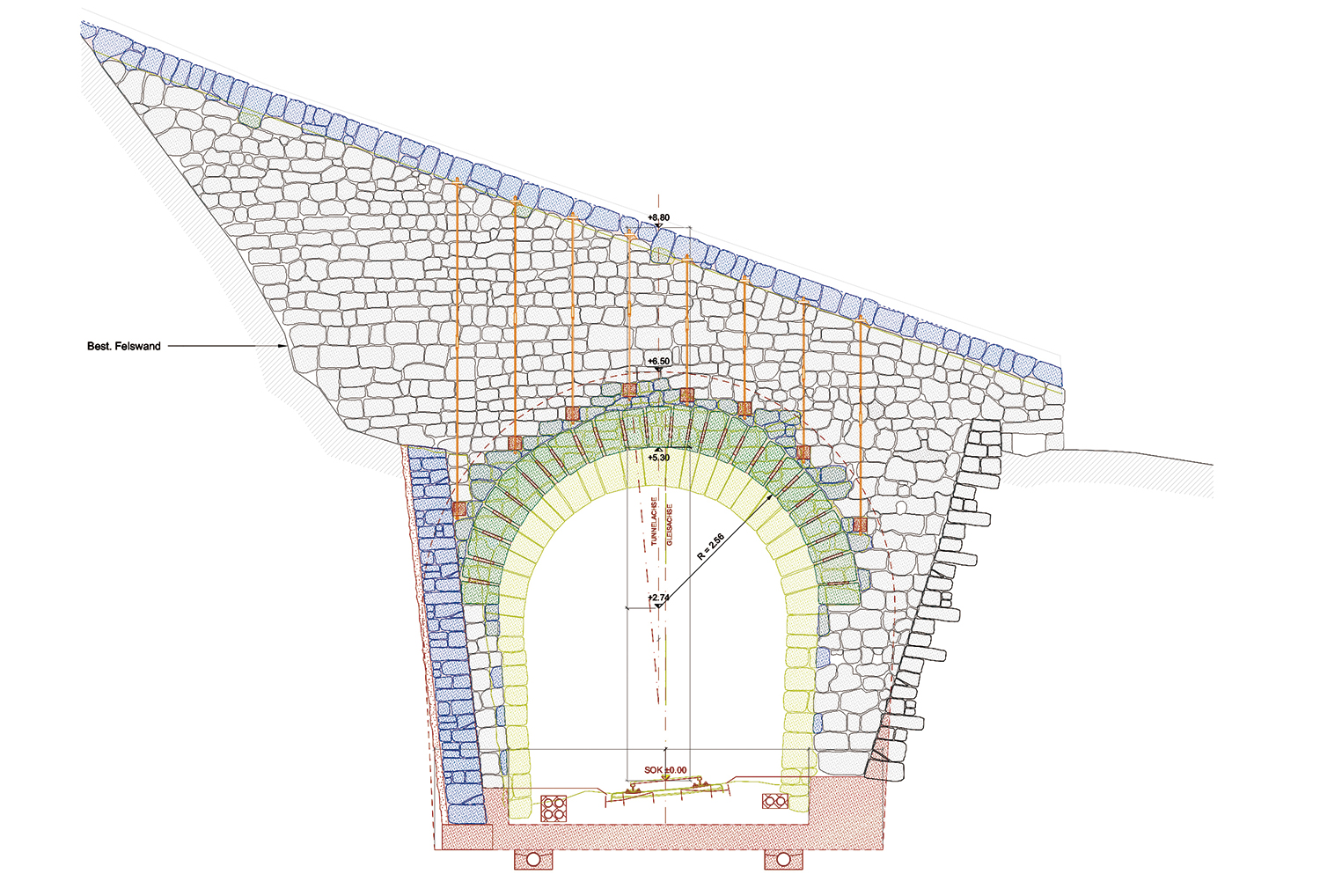
Swiss Albula Tunnel Portal Expansion (2023) The Albula Tunnel Railway Line in Switzerland is a UNESCO World Heritage Site. As part of RhB’s architectural invitation competition to address how to expand the portal façade when the new tunnel profile is widened by 1m, architect Ramun Capaul collaborated on preserving the stone and mortar layers of the portal, retaining its stratified history. At the same time, stone console components were left intact to make the intervention legible. ©Shin Jaehee
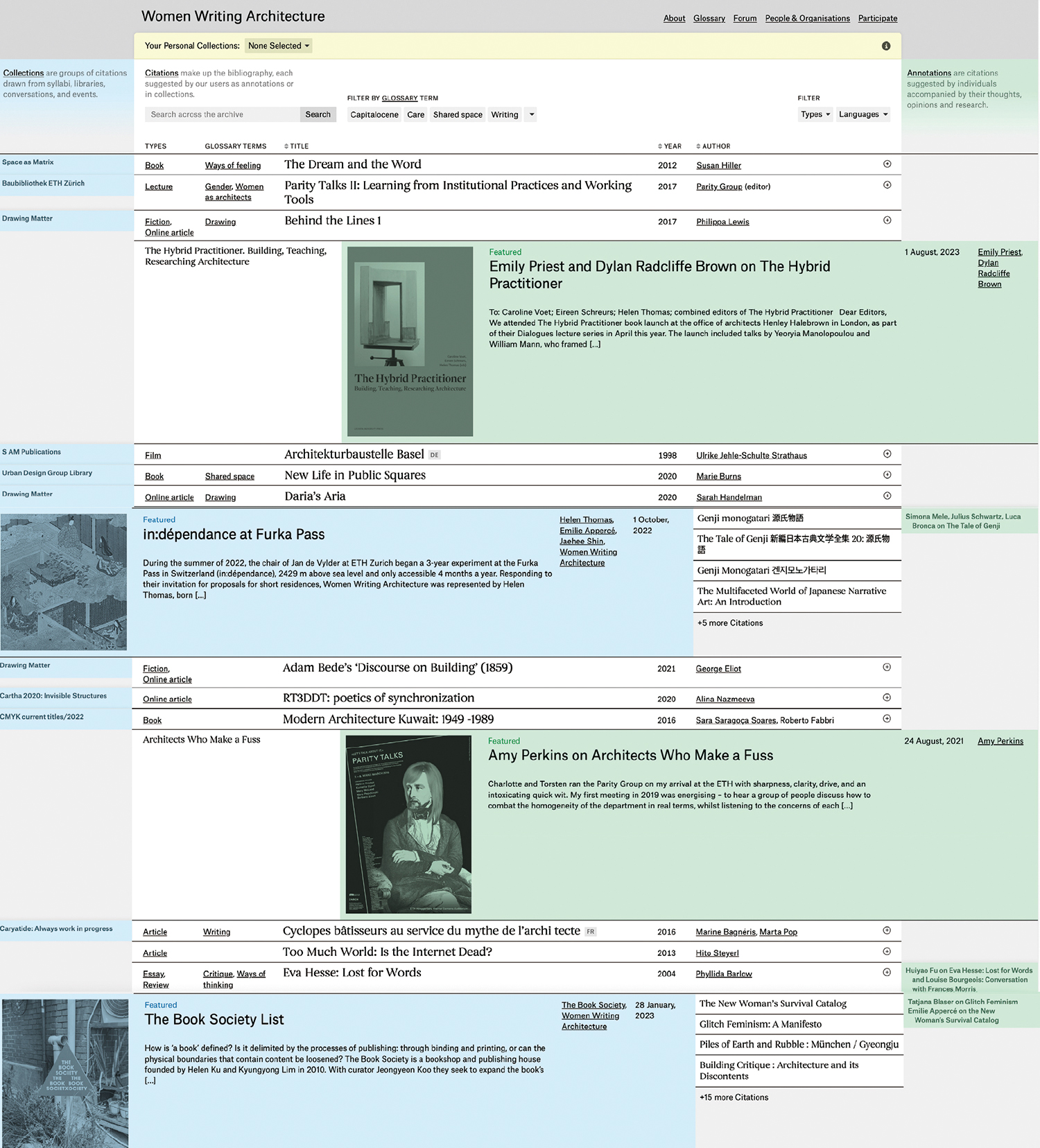
Women Writing Architecture. An open-source platform curated in collaboration with Helen Thomas and Emilie Apperce, focusing on texts intersecting women, writing, and architecture. It collects materials, posts, and shares annotated text lists, offering insights into societal and spatial issues where women play a central role. Screenshot from Women Writing Architecture official website
Twisting, Skipping or Going Off the Beaten Track
The architects of the Harbinger Project contextualise their work in unique ways by twisting, skipping, or going off the beaten track by sidestepping established narratives. HYPERSPANDREL (principal, Chon Jaewoo) playfully overturns Adolf Loos’s stern proclamation that ‘ornament is a crime’ by connecting ornamentation with byproducts and embracing their value. The studio name, which expresses the tendency to exaggerate (hyper) the spandrel (a byproduct of arch construction), also reflects his vision. One example of their work is a ring that reinterprets architectural ornamentation—miniaturising the Ionic and Doric column capitals as body adornments (accessories). This ring, which ‘redeems ornamentation’, also reveals how he defines architecture: without architectural ideas, there is no architecture, and with architectural ideas, anything can become architecture. Thus, the ring itself is part of HYPERSPANDREL’s architecture. In addition to the ring, tote bags embossed with floor plans also serve as souvenirs of HYPERSPANDREL’s architecture, reflecting the subtle ambition to sustain notions of architecture as a livelihood. He works not to persuade clients but to engage with the public, and he approaches his practice as architecture itself, rather than as building. Meanwhile, Gwangwoon Interior (2024) satirises the reality of Korea’s construction industry, which prioritises ‘speed and cost-effectiveness’ over other considerations.
Midday (co-principals, Oh Yeonjoo, Jeong Haewook) centres its architectural exploration on the virtual. They interpret the characteristics of the virtual digital world and critique what is not real yet presents itself as such. Independent Components (2024) highlights the digital tools that turn objects into selectable contours, while their exhibitions, Exploded Corner (2024) and Midday Office (2023), point out that most architectural finishes are mere illusions, focusing on corners as specific boundaries. In both Independent Components and Midday Office, they use bold materials to emphasise corners, intending to make individual objects stand out. This affirming objects approach, if traced back to philosophy, aligns with Graham Harman, but they return directly to practicalities. They describe their furniture and lighting – designed as standalone objects – to clients as ‘easy to relocate’, balancing an architect’s philosophy with a pragmatic sense of reality. This attitude allows them to navigate between philosophy, the real world, and the ambiguous space in between with bold strides.
Architectural works on Jeju are often justified through regionalism. As with the common association made between stone walls and Jeju, the island feels distinctly exotic and specific to its environment compared to the mainland. However, the problem of Orientalism, defined as the western way of perceiving and dominating the east, has long been acknowledged, and discussions have since shifted towards finding paths within the fissures between western oppression and eastern internal structures. Yet, DARANGSHE ARCHITECTS (principal, Hyun Seunghoon) takes a stance that fits into none of these debates. Their perspective lies not in the dichotomy between the east versus the west or capital versus region but in the connected framework of process and outcome. Hyun emphasises unexpected discoveries and dialogues that emerge during the process rather than strictly aligning plans with results. In this sense, Darangshe (2018, 2024 –) does not derive from plans to produce results but from outcomes generated through the process itself.
Jaehee Shin MSc Arch ETH SIA (principal, Shin Jaehee) shares Aldo Rossi’s language of collective memory, but instead of geometric forms, their focus delves into discussions around cultural heritage and historical architecture, championing the idea of multiple authors. Farmhouse Atelier with a View of Speicher (2024 –), combines the sense of observing old grain stores with the sensibility of having Virginia Woolf’s ‘a room of one’s own’. Regarding femininity, Shin also references writing as an act in Women Writing Architecture.
While Shin finds femininity in caring for old spaces, actively seeking one’s own room in which to write, Lee Dammy (principal, Flora and Fauna) expands the feminine perspective to an architectural dimension. Just as Chon Jaewoo appropriates ornamentation in opposition to Adolf Loos, Lee uses ornamentation to challenge and address the architectural industry, modern society, and Korean culture. Even a single ornamental element reflects rebellion against industrial lines, aspirations for an era of personal imagery, abstraction inspired by the non-human, subversion of the notion of ornament as something ‘added’, and considerations for easier construction methods. Lee’s ornamentation touches architecture, society, time, and Korea on multiple levels, presenting a gaze that intertwines affirmation and negation. Architecturally, their work is neither explicit nor obvious, often hidden in subtle gestures. At first glance, their work may appear lacking in logic, but this is due to the sheer abundance and layered complexity of the logic embedded within. Deciphering it demands significant effort, which simultaneously leaves vast room for interpretation—as with the most profound forms of art.
As I wrote this piece and examined the architects of the Harbinger Project, one realisation emerged: much like the medium itself, this feature is an act of editing, shaped by limitations, structures, and hierarchies.
The Harbinger Project, too, is the result of choices—selected, framed, and presented within these boundaries.
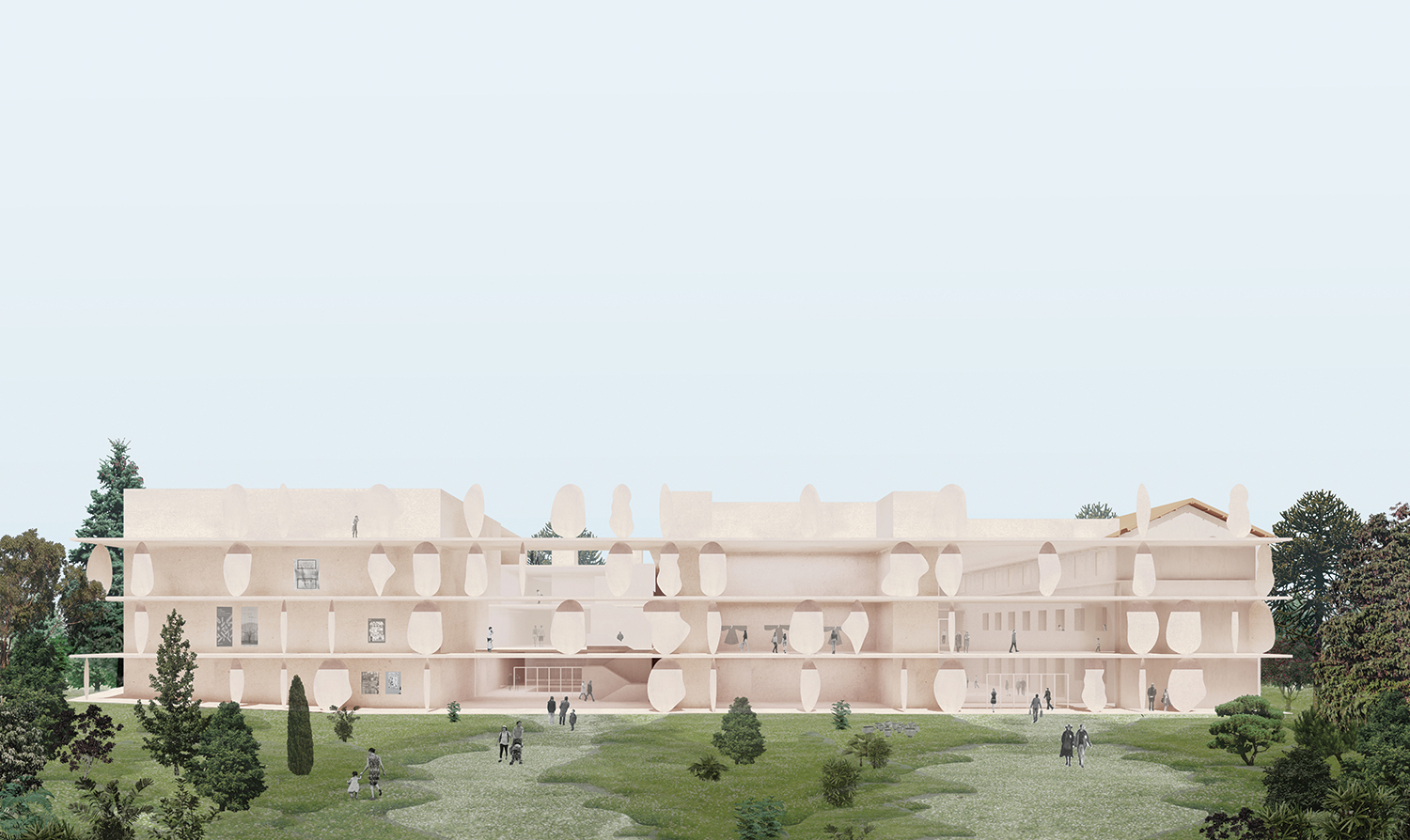
Craft and Architecture (2016) A project at the Seoul Museum of Craft Art that questioned the boundaries between industry and craft, exploring the autonomous ornamentation and independence of architecture. The conditions for reorganising the buildings of the former Pungmun Girls’ High School included a new façade composed of individual columns, experimenting with configurations of wholes and parts, or ‘open wholes’. The project positioned columns in such a way to align with the natural directionality of the craft, moving from the massive old trees haunting the school grounds to the new exhibits the columns would soon face. Imagining the building as both animalistic and plant-like, the project marked the first time the name Flora and Fauna was used for the studio’s activities. ©Flora and Fauna
